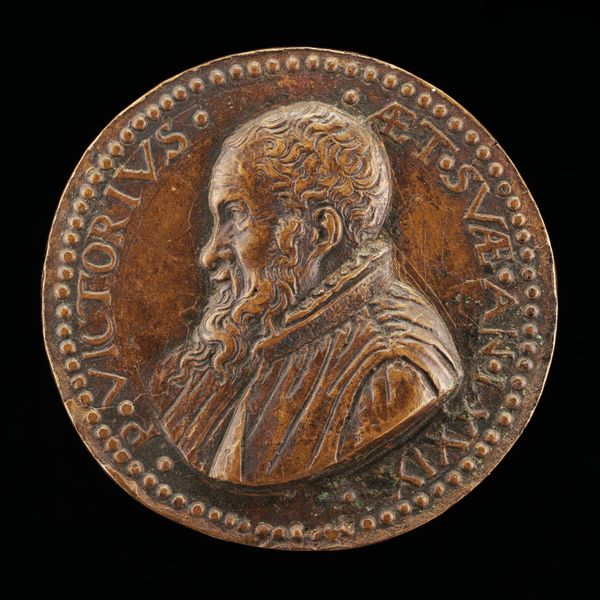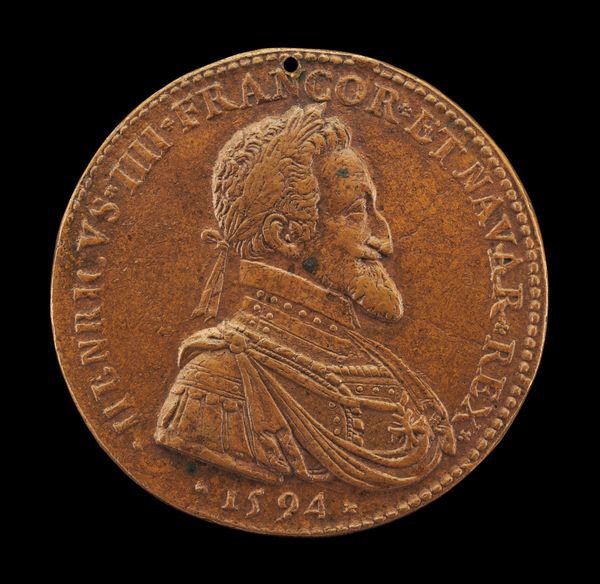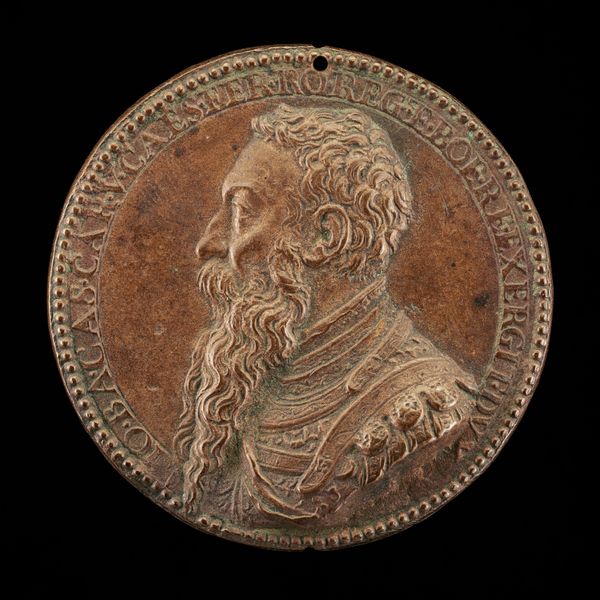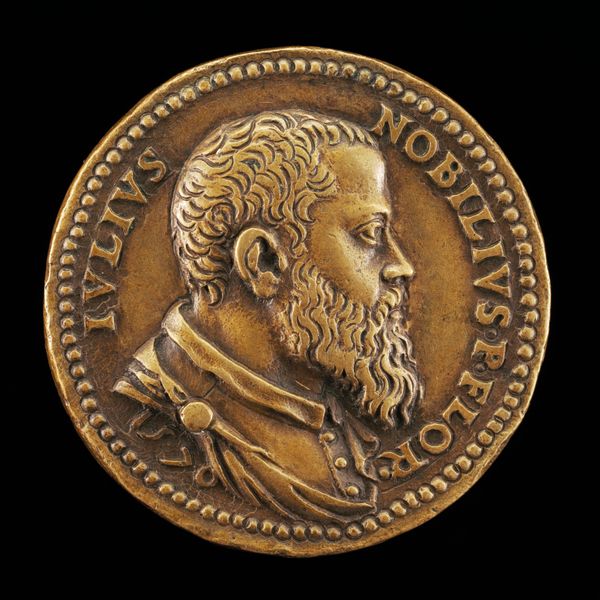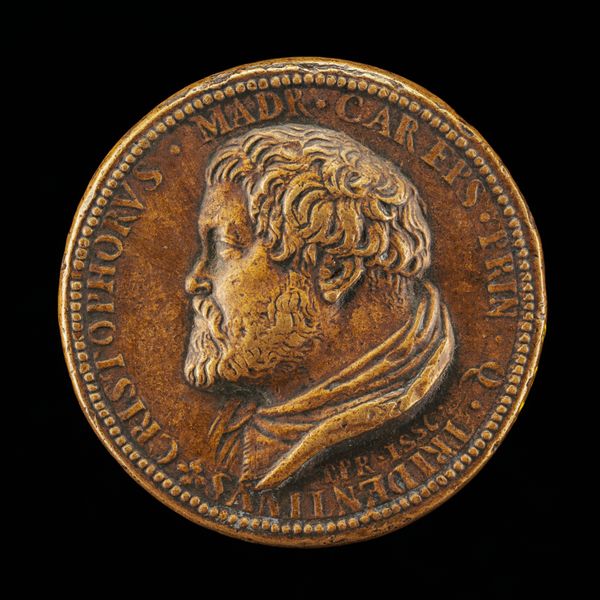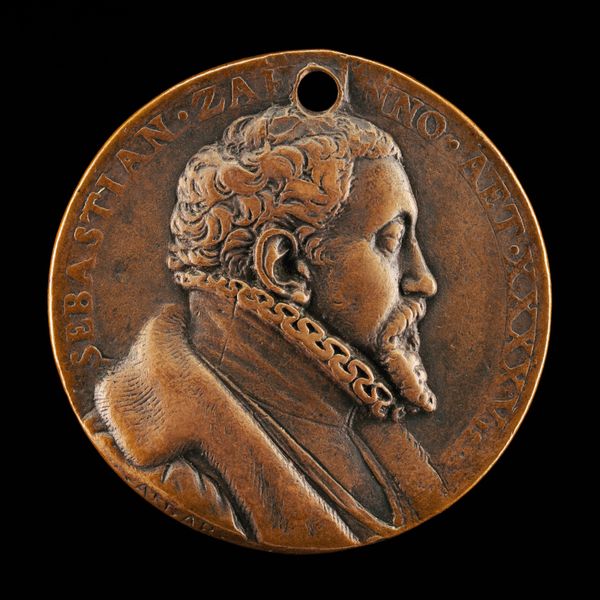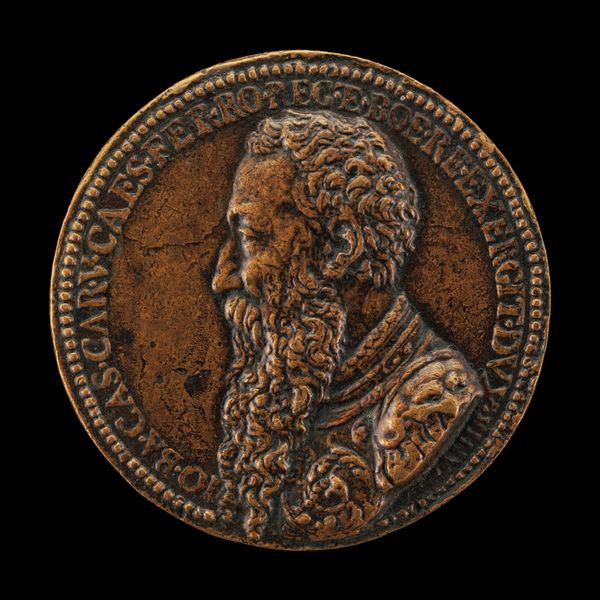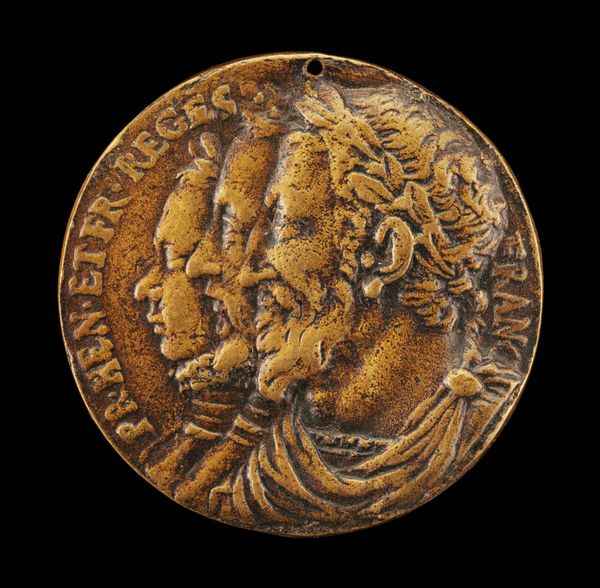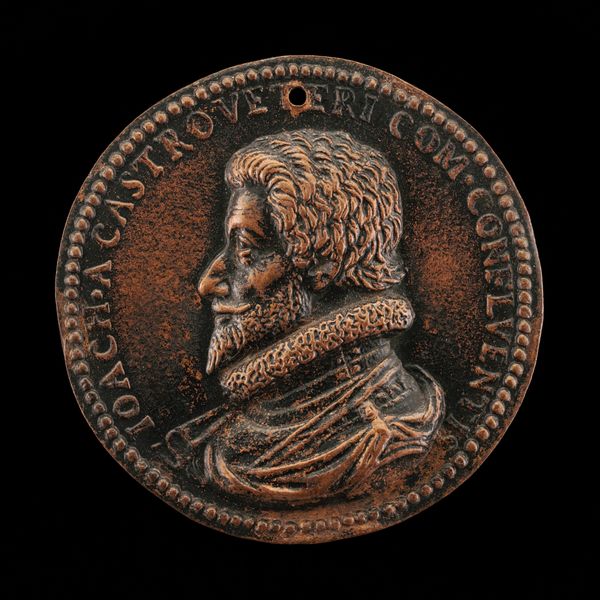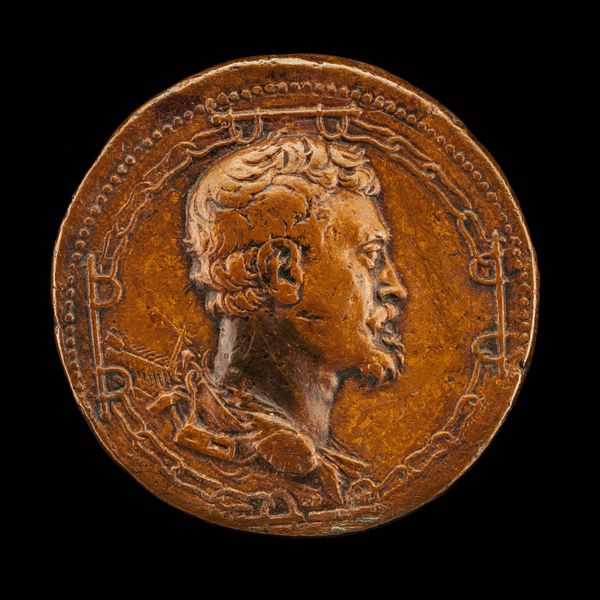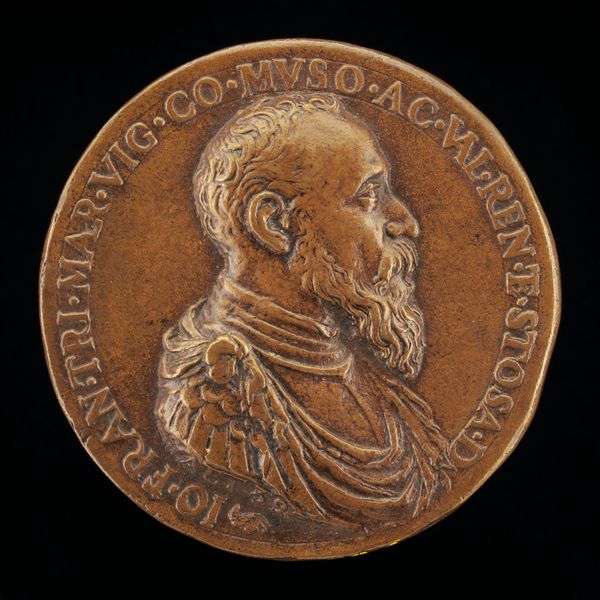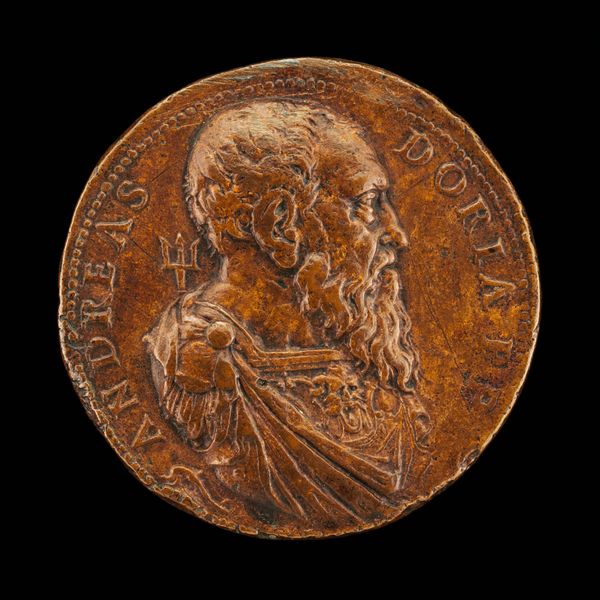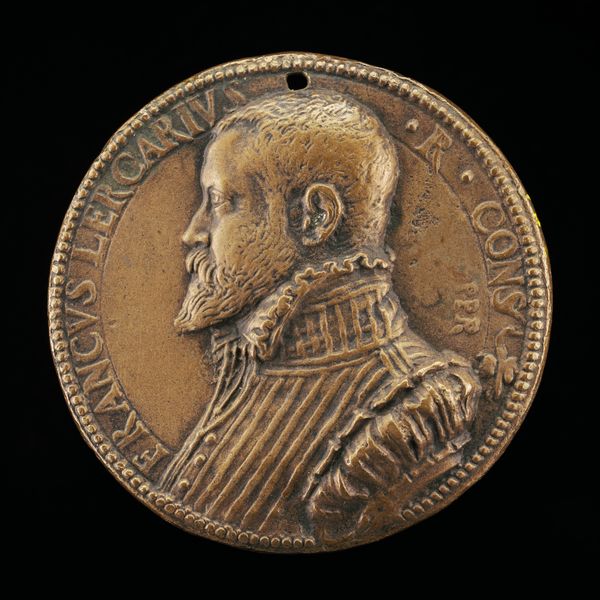![Pier Luigi Farnese, 1503-1547, 1st Duke of Parma and Piacenza 1545 [obverse] by Giovan Federico Bonzagni](/_next/image?url=https%3A%2F%2Fd2w8kbdekdi1gv.cloudfront.net%2FeyJidWNrZXQiOiAiYXJ0ZXJhLWltYWdlcy1idWNrZXQiLCAia2V5IjogImFydHdvcmtzLzI2Y2JhY2M2LWQ1YjgtNDMyZC05NjI1LWRmYTNiNDQ1ZmI3Zi8yNmNiYWNjNi1kNWI4LTQzMmQtOTYyNS1kZmEzYjQ0NWZiN2ZfZnVsbC5qcGciLCAiZWRpdHMiOiB7InJlc2l6ZSI6IHsid2lkdGgiOiAxOTIwLCAiaGVpZ2h0IjogMTkyMCwgImZpdCI6ICJpbnNpZGUifX19&w=3840&q=75)
Pier Luigi Farnese, 1503-1547, 1st Duke of Parma and Piacenza 1545 [obverse] c. 1547
0:00
0:00
bronze, sculpture
#
portrait
#
sculpture
#
bronze
#
11_renaissance
#
sculpture
#
history-painting
#
italian-renaissance
Dimensions: overall (diameter): 4.03 cm (1 9/16 in.) gross weight: 48.65 gr (0.107 lb.) axis: 6:00
Copyright: National Gallery of Art: CC0 1.0
Curator: This is a bronze portrait medal of Pier Luigi Farnese, the first Duke of Parma and Piacenza, crafted around 1547 by Giovan Federico Bonzagni. What are your initial thoughts? Editor: Hmm, the face feels surprisingly… human? You know, not overly idealized like some Renaissance portraits. And it's a bit melancholic, maybe even troubled. Gives it an interesting edge. Curator: Interesting. From a material perspective, bronze was often used for commemorative objects. These medals, due to their relatively low cost and reproducibility, allowed for a wider dissemination of images of rulers and important figures. It’s essentially early propaganda, wouldn't you agree? Editor: Propaganda with artistic merit! The texture alone – the way the light catches the roughness of his beard and the polished surface of the medal – it's quite lovely. It invites touch, doesn’t it? And you can sense the artist's hand in shaping the clay model before it was cast. Curator: Precisely. The casting process itself is significant. Bonzagni, like many Renaissance artists, was a skilled craftsman. Consider the detail: the inscription, the intricate armour... Each element was carefully planned and executed through a labour-intensive process. These objects were products of workshops, hierarchies of skill, and complex economic systems. Editor: Makes you wonder about the working conditions, doesn’t it? Were the bronze casters happy? Probably not, I suppose. But you’re right. All that skill! And something about this makes me imagine Pier Luigi just for a second, looking off to the distance on his powerful warhorse on the rolling fields of the Emilia. What a great drama in real life. I wonder what happened to his medals later; who kept them? Were they symbols of prestige or private, bittersweet mementos? Curator: Undoubtedly symbols of prestige, initially at least. These medals circulated amongst the elite, reinforcing power and cementing social standing. Editor: Power that eventually turns to dust. Sorry, being overly dramatic, but it strikes me this wasn’t too long before his murder by conspirators... that heavy sense of fate feels really palpable. I think his humanity resonates with me. Curator: A fitting end, then. What initially appears to be a simple portrait medal reveals layers of historical, social, and artistic significance. Editor: Agreed. From bronze to bloodlines, a tiny little artifact carries a powerful echo through the ages.
Comments
No comments
Be the first to comment and join the conversation on the ultimate creative platform.

